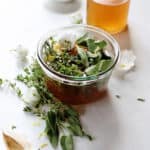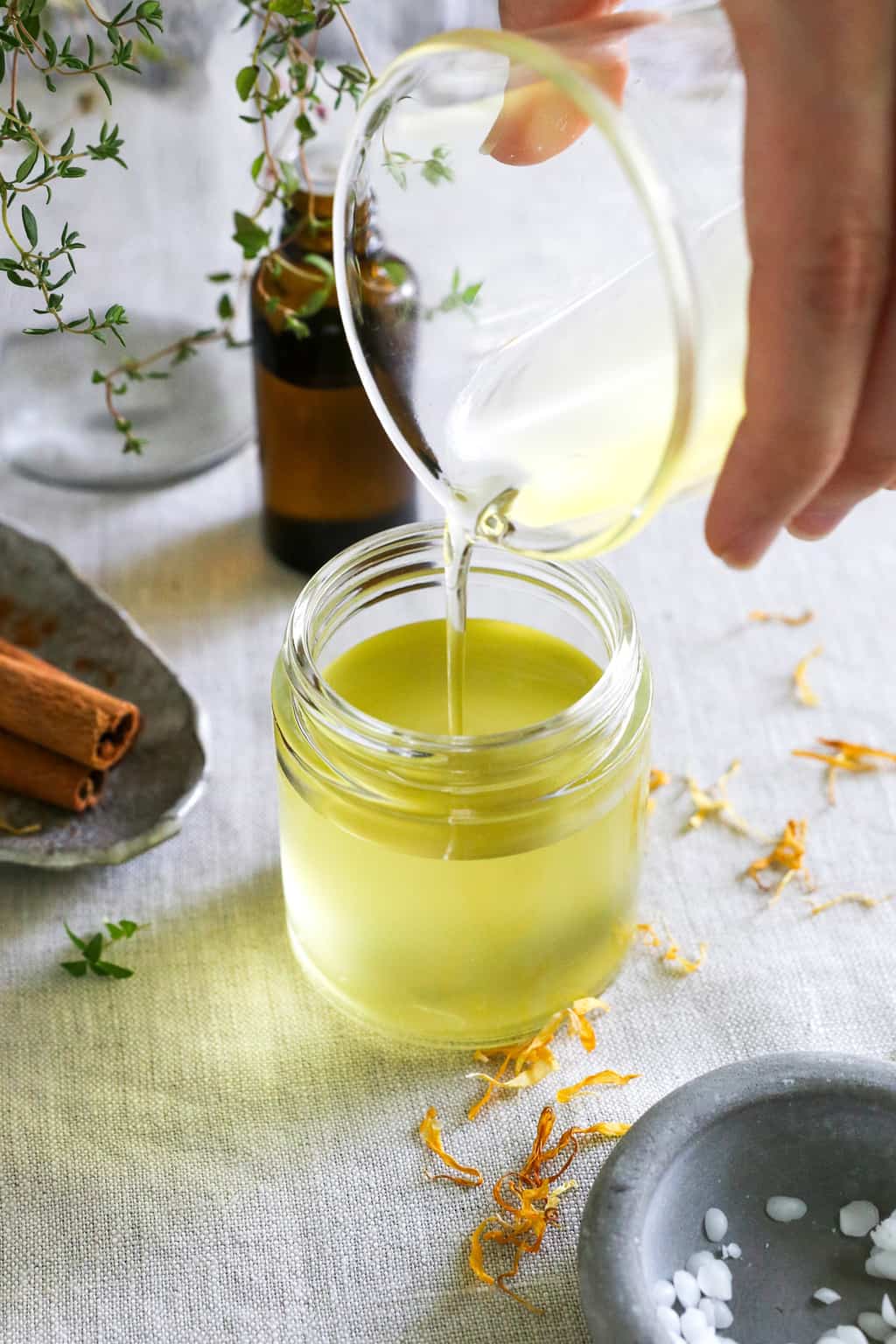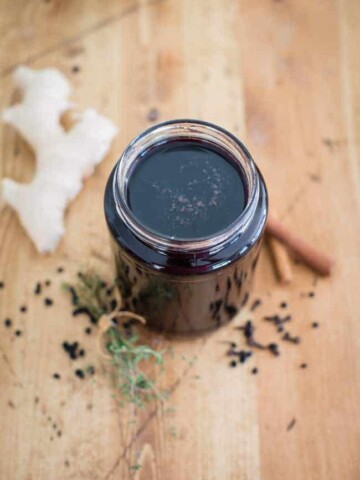What’s an oxymel, you ask? It’s a traditional remedy that combines vinegar, honey, and herbs to create a flavorful solution that’s much easier to get down. Learn how to make an oxymel with immune-boosting herbs—it’s your stay-well prescription for getting through the next cold and flu season!
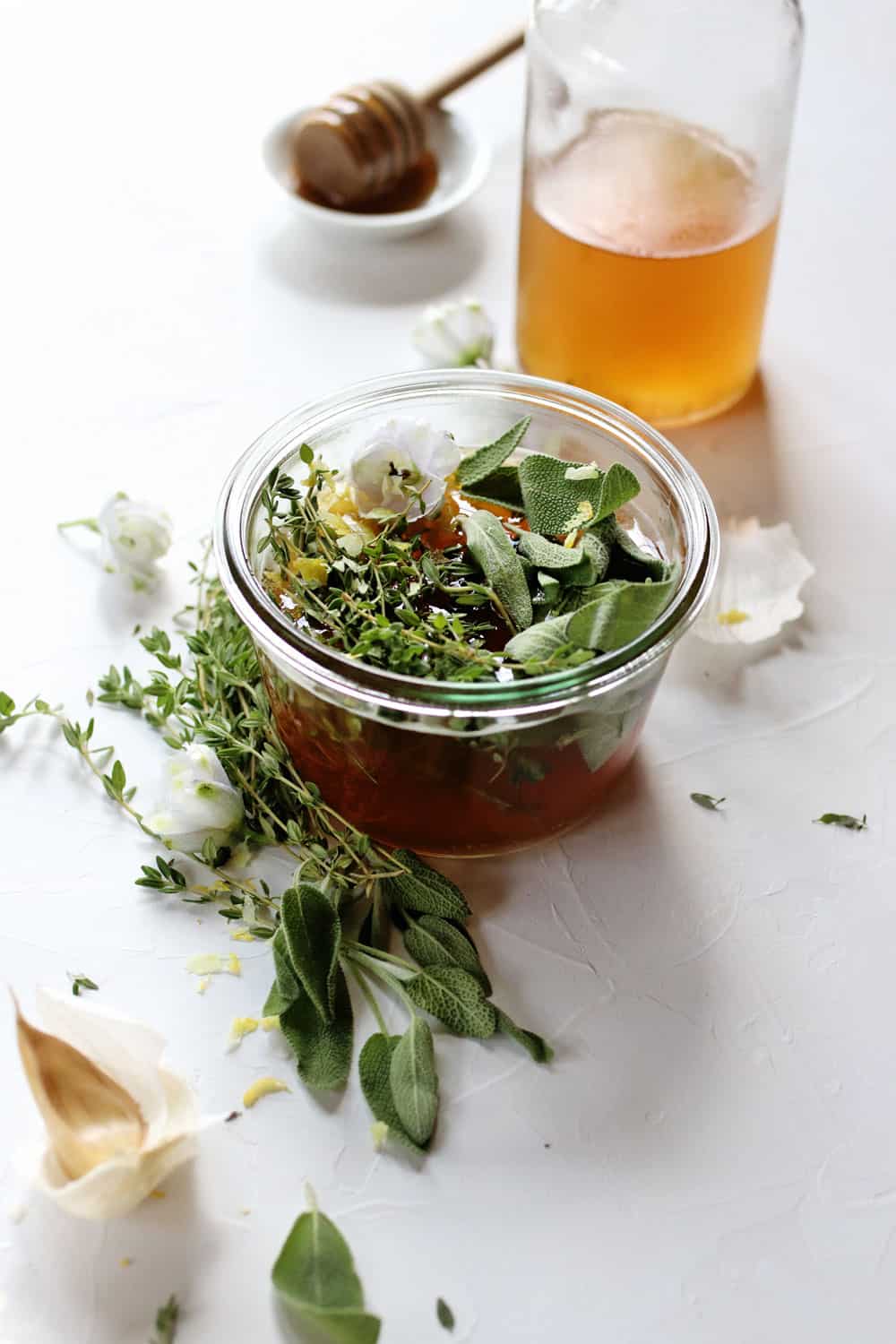
Using natural remedies for colds can be a wise choice as they often provide relief without the grogginess that can come with over-the-counter medications. Some of my favorite remedies include drinking ginger lemon tea, busting congestion with essential oils, and using tinctures and oxymels to keep my immune system humming.
Jump to:
What Is an Oxymel?
Just when I think I’ve tried just about every herbal home remedy under the sun, I come across one that surprises me. While scouring the internet the other day, I stumbled on an article about oxymels, and it stopped me cold in my tracks. Huh?
Turns out oxymels are more common than you think. The term oxymel comes from the Latin meaning “acid and honey.” And though it has a long history of medicinal use in different cultures, it’s just a simple combination of apple cider vinegar and raw honey [source]. It is used to administer herbs that might not taste so pleasant on their own.
Ingredients
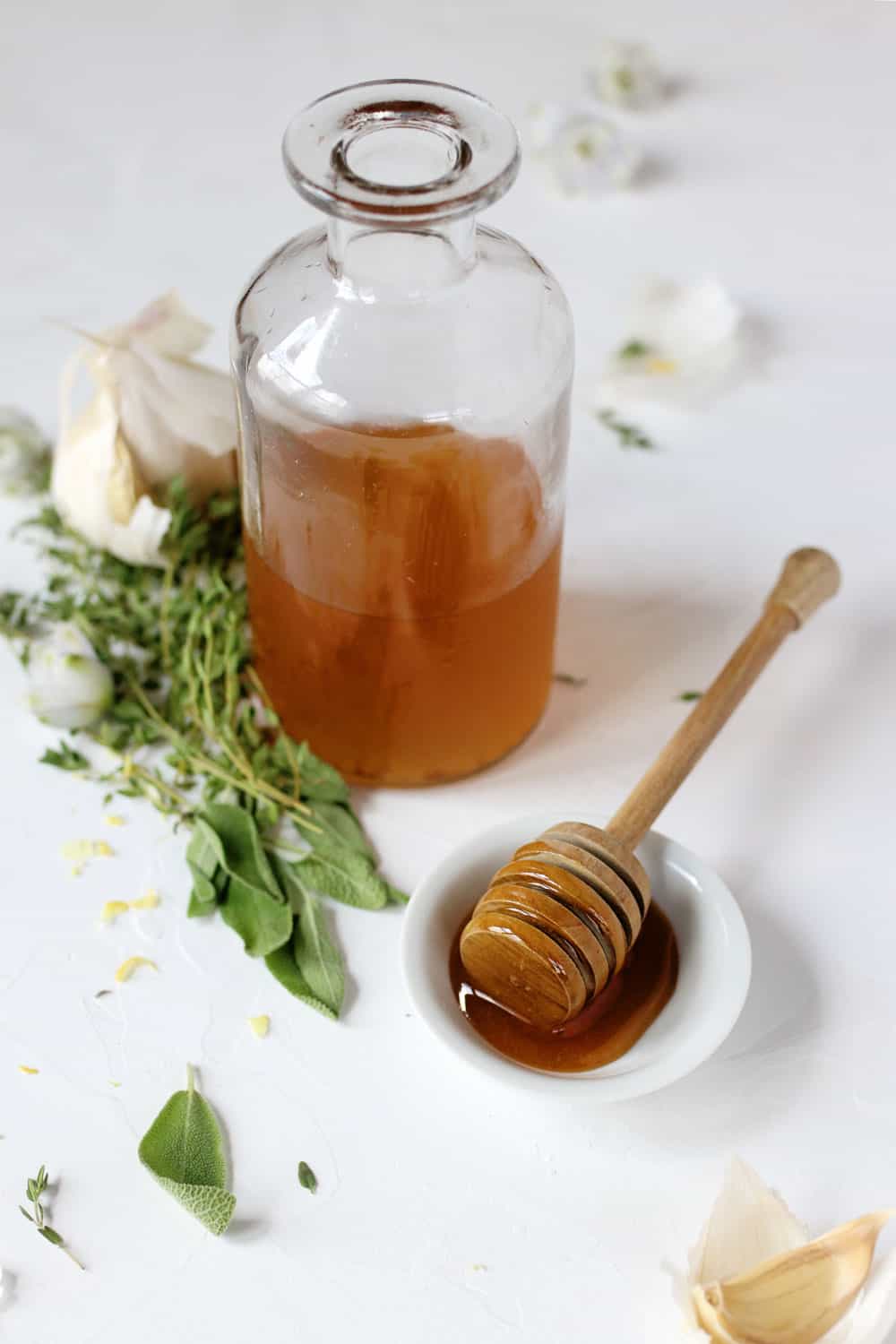
- Raw apple cider vinegar helps alkalize the body, which in turn kills bacteria and viruses. Making infused vinegar extracts the beneficial properties of herbs.
- Raw honey relieves sore throats and inflammation [source], and it makes the vinegar much easier to take.
- Herbs such as ginger, echinacea, lemon peel, sage, thyme, rosemary, mint, or garlic have natural anti-inflammatory and healing properties.
- 12-ounce glass canning jar with lid
Immunity Oxymel Instructions

Choose your herbs: Select the herbs you want to use for your oxymel. You can use a single herb or a combination, depending on the flavor and potential benefits you’re seeking.
Prepare the herbs: If using fresh herbs, gently wash and pat them dry. If using dried herbs, measure out the desired amount.
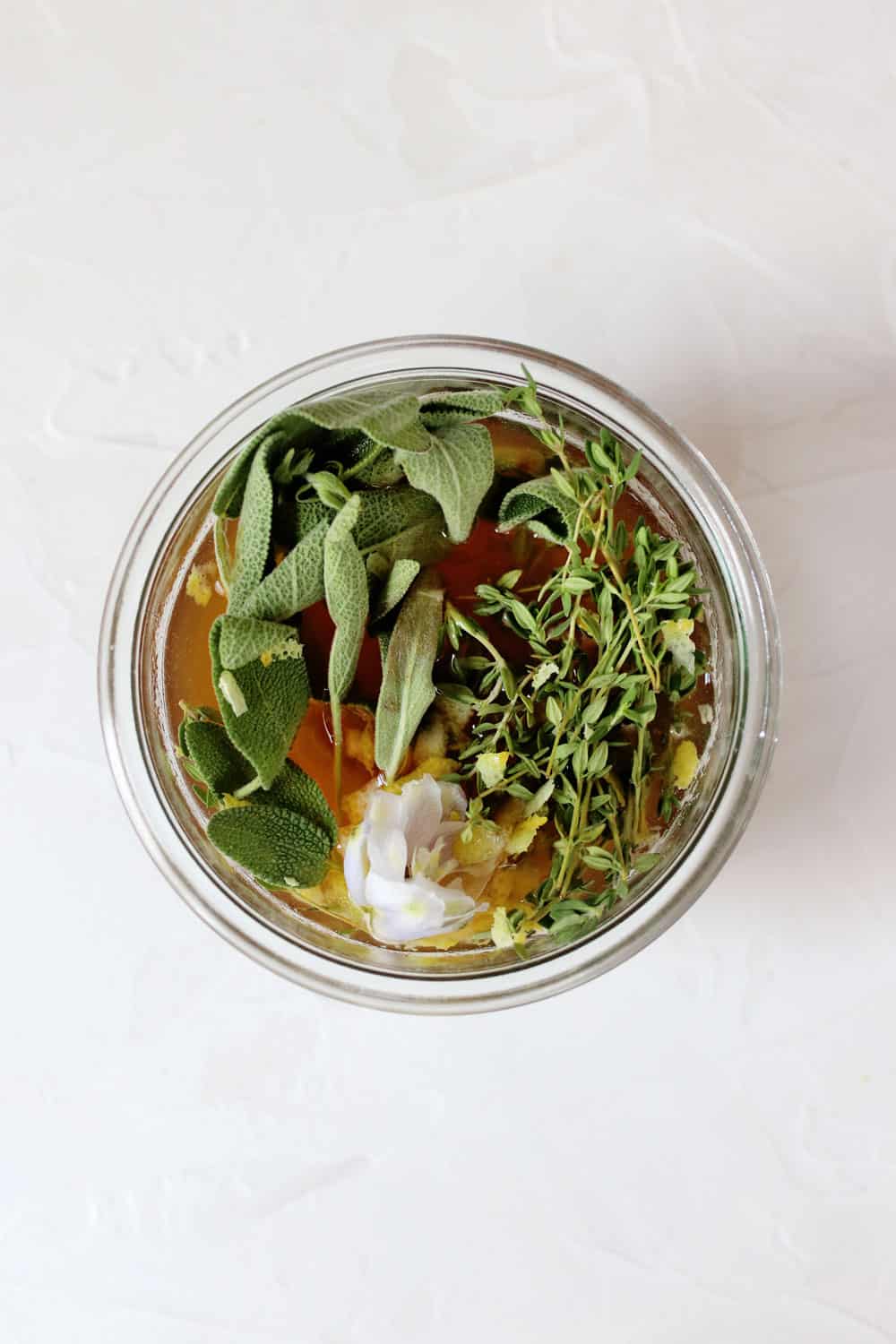
Combine vinegar and herbs: Fill your glass jar about one-third full with the chosen herbs. Pour raw apple cider vinegar over the herbs, covering them completely.
Infuse the mixture: Seal the jar with the lid and place it in a cool, dark place like a cupboard or pantry. Allow the mixture to infuse for about 2–4 weeks.
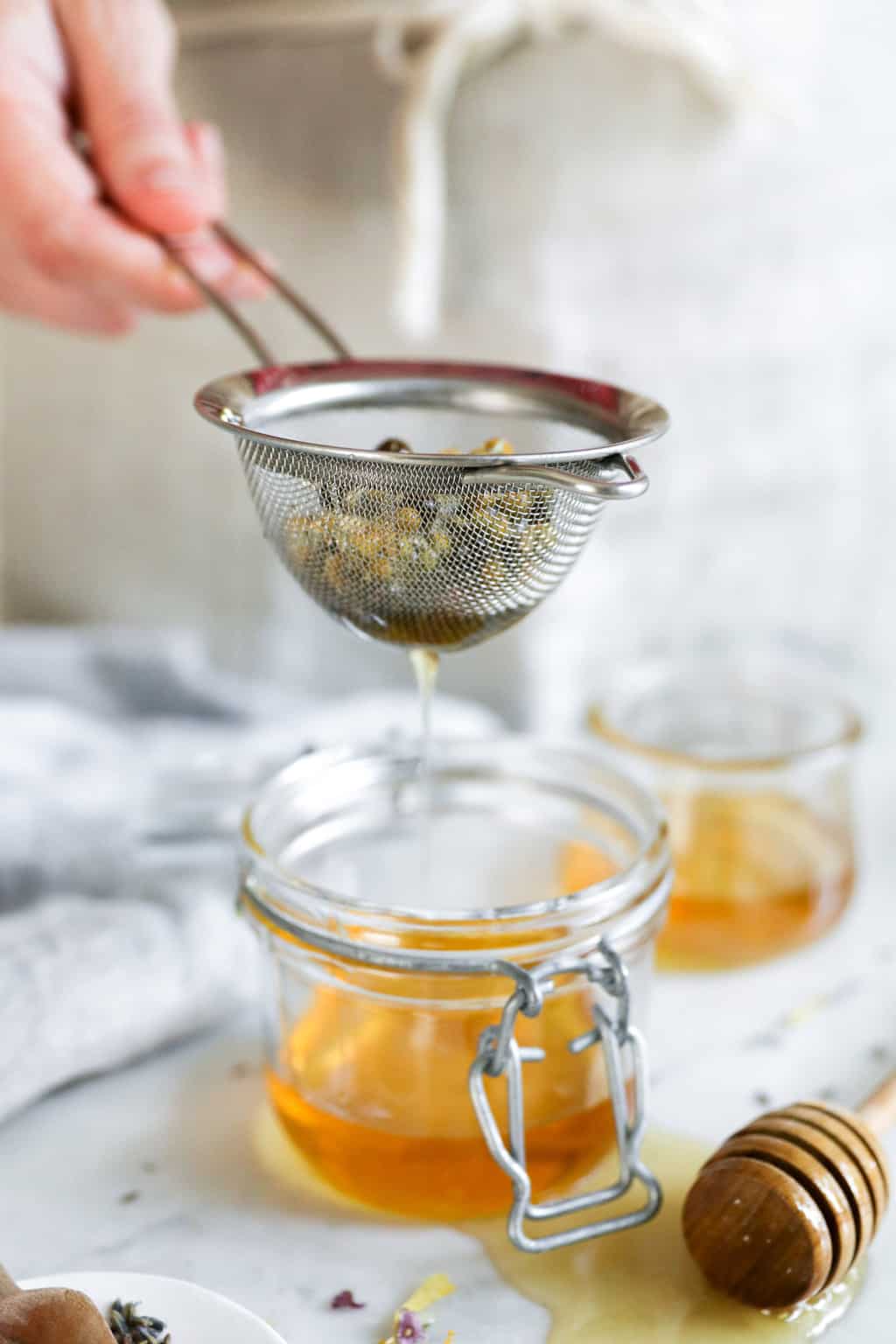
Strain the mixture: Use a fine mesh strainer or cheesecloth to remove the herbs. Squeeze or press the herbs to extract as much liquid as possible.
Measure honey: Measure out an equal amount of raw honey to the infused vinegar. For example, if you have 1 cup of infused vinegar, use 1 cup of raw honey.
Combine vinegar and honey: Heat the infused vinegar slightly first then add the raw honey and mix well.
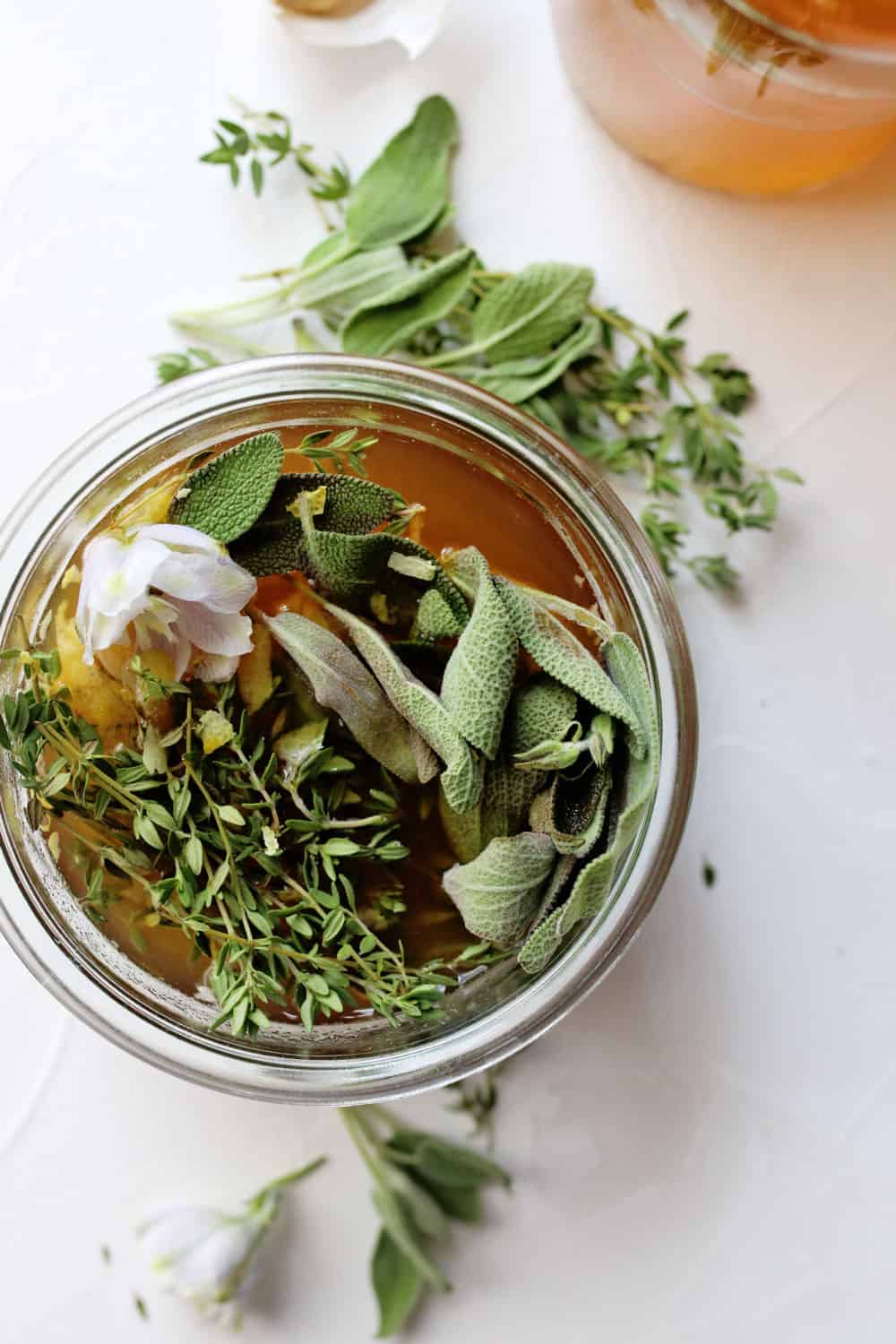
Bottle and store: Pour the mixture into clean glass bottles or jars. Seal them tightly with lids.
Label and date: Label your oxymel with the ingredients used, the date it was made, and any specific instructions for use.
Usage: To use your herbal oxymel, you can take 1 teaspoon to 1 tablespoon daily, either on its own or mixed with water or in an herbal tea.
Health note: Do not give anything containing honey to babies 12 months of age and under.
Oxymel Herbal Combinations
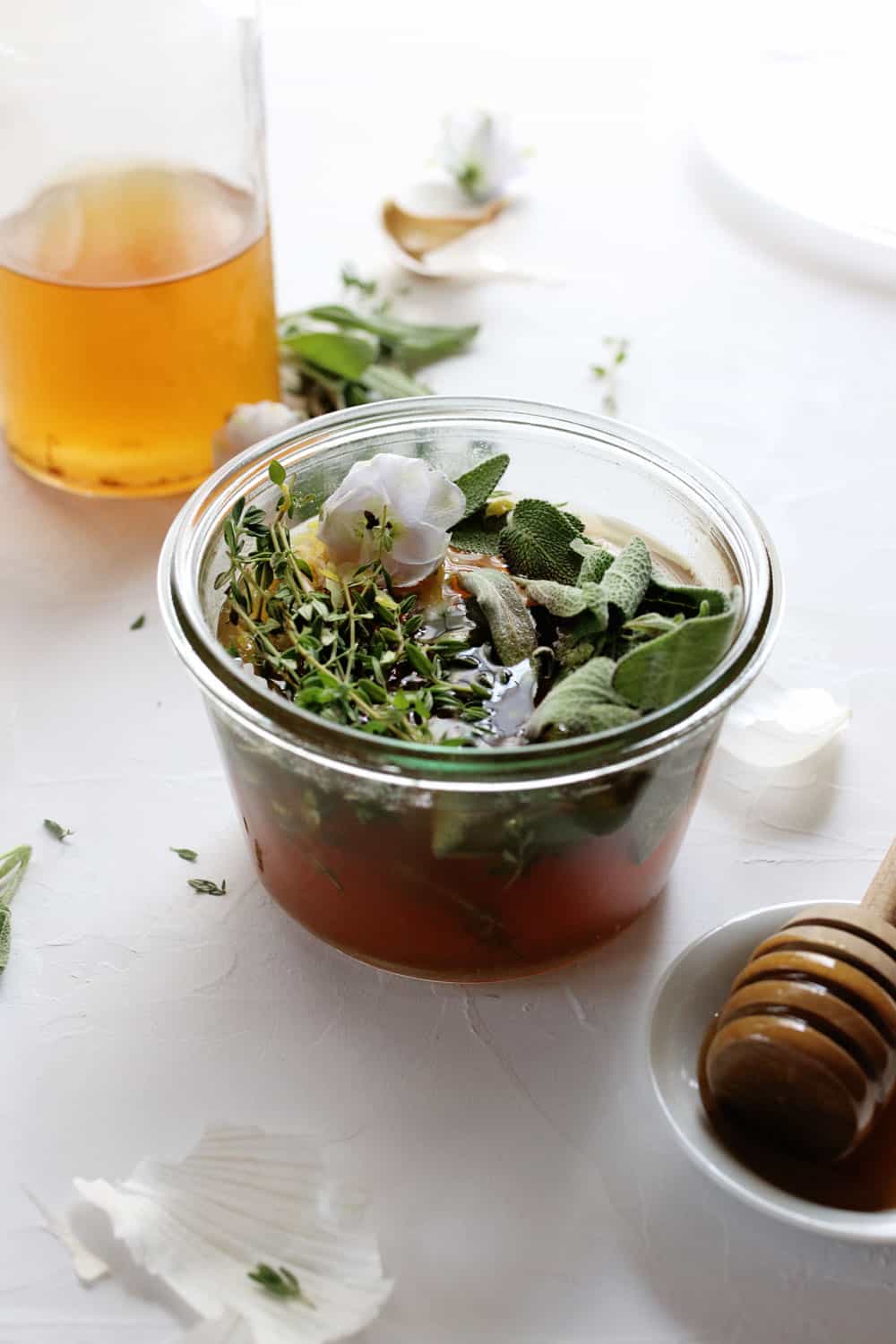
Quite a few herbs are believed to have immune-boosting and supportive properties, and these could potentially help you avoid getting sick during the winter months. Here are some herbal combinations to consider:
1. Elderberry and Echinacea Oxymel:
- Elderberries are rich in antioxidants and are believed to support the immune system [source].
- Echinacea is thought to stimulate the immune system and help the body fight off infections [source].
2. Ginger, Lemon, and Turmeric:
- Ginger has anti-inflammatory and antimicrobial properties that can support the immune system [source].
- Lemon is rich in vitamin C, known for its immune-boosting effects [source].
- Turmeric contains curcumin, a compound with anti-inflammatory and immune-supporting properties [source].
3. Thyme and Oregano:
- Thyme and oregano contain compounds with antimicrobial properties.
- These herbs may help support respiratory health and the immune system.
4. Rosehips and Hibiscus:
- Rosehips are high in vitamin C and antioxidants, which can help strengthen the immune system [source].
- Hibiscus adds a pleasant tartness and is also a source of vitamin C and many other therapeutic properties [source].
5. Astragalus and Licorice Root:
- Astragalus is a natural antimicrobial that also enhances the immune system [source], and it is believed to help the body adapt to stress.
- Licorice root has anti-inflammatory properties and may support overall immune health [source].
6. Lemon Balm and Peppermint:
- Lemon balm has antiviral properties [source] and is known for its calming effects.
- Peppermint is antimicrobial and can help with respiratory health and digestion [source].
Infusion Methods
There are actually two different ways to make oxymels. If you’re already feeling under the weather, you can simmer your way to a quick oxymel, but you run the risk of reducing the nutritional value of the herbs you are using.
Instead, I like to infuse my oxymel with the herbs gently and over a longer period of time. While it takes a few weeks to make, the medicinal benefits you get from taking it are well worth the effort and extra time. Just start your infusion at least a month before cold and flu season hits, and it should be ready to go at the first sign of sniffles.
To use, simply swallow it by the spoonful or dilute it ever so slightly with seltzer water or ginger ale.
Storage
Always use a glass jar to store oxymels, as plastic can react with vinegar and alter the taste of the product. The tight-fitting lid will prevent air and impurities from getting inside. Store the jar away from sunlight, which can change the color and flavor of your oxymel.
If kept in the fridge in a clean glass container, your oxymel should last for 6 months. If using dried herbs instead of fresh, an oxymel can last for up to a year.
It’s a good idea to label your oxymel jar with the date you made it as a reminder. If you notice mold, strange odors, or discoloration, discard the oxymel immediately.
Top Tips
- To fend off a cold, try herbs like ginger, cayenne pepper, garlic, and lemon zest.
- To improve circulation and calm an upset stomach, go with rosemary and ginger.
- For soothing nerves, toss in some lavender, nettles, and chamomile.
FAQ
Tinctures are based on alcohol, while oxymels are based on ACV. Different herbs lend themselves better for one or the other. Oxymels tend to be less potent than tinctures, but they make up for it by retaining more minerals than alcohol can.
Herbs like elderberry, echinacea, ginger, turmeric, thyme, oregano, and astragalus are commonly used for their immune-supporting benefits.
A common ratio is to fill about one-third of your jar with herbs, cover them with vinegar until about three-quarters full, and then add an amount of honey equal to the infused vinegar. Adjust these proportions based on the size of your jar.
Yes, you can use either fresh or dried herbs. If using dried herbs, use about half the amount you would use for fresh herbs.
Stay Well Oxymel
Equipment
- 16-ounce canning jar with lid
Materials
- ½ cup apple cider vinegar raw
- ½ cup honey raw
- Herbs such as ginger, echinacea, lemon peel, sage, thyme, and garlic
Instructions
- Fill a jar ¼ of the way with herbs. Pour in the raw honey and raw apple cider vinegar.
- Screw on the top (if using a metal lid, place a piece of parchment paper in between the lid and the vinegar mixture), shake, and then let it sit on your kitchen counter for 4 weeks.
- Strain the herbs out and store in a lidded glass jar away from heat and light.
Notes
References
- Orhan HI, et al. Maulana and sekanjabin (oxymel): a ceremonial relationship with gastronomic and health perspectives. J Ethn Foods. 2022.
- Hwang SH, et al. The efficacy of honey for ameliorating pain after tonsillectomy: a meta-analysis. Eur Arch Otorhinolaryngol. 2016.
- Młynarczyk K, et al. Bioactive properties of Sambucus nigra L. as a functional ingredient for food and pharmaceutical industry. J Funct Foods. 2018.
- Burlou-Nagy C, et al. Echinacea purpurea (L.) Moench: biological and pharmacological properties. A review. Plants (Basel). 2022.
- Mao QQ, et al. Bioactive compounds and bioactivities of ginger (Zingiber officinale Roscoe). Foods. 2019.
- Carr AC, et al. Vitamin C and immune function. Nutrients. 2017.
- Aggarwal GG, et al. Potential therapeutic effects of curcumin, the anti-inflammatory agent, against neurodegenerative, cardiovascular, pulmonary, metabolic, autoimmune and neoplastic diseases. Int J Biochem Cell Biol. 2009.
- Marmol I, et al. Therapeutic applications of rose hips from different Rosa species. Int J Mol Sci. 2017.
- Izquierdo-Vega JA, et al. Organic acids from Roselle (Hibiscus sabdariffa L.)—a brief review of its pharmacological effects. Biomedicines. 2020.
- Zheng Y, et al. A review of the pharmacological action of Astragalus polysaccharide. Front Pharmacol. 2020.
- Hoffman J, et al. New herbal biomedicines for the topical treatment of dermatological disorders. Biomedicines. 2020.
- Zhao H, et al. Peppermint essential oil: its phytochemistry, biological activity, pharmacological effect and application. Biomed Pharmacother. 2022.
This article was medically reviewed by Dr. Gina Jansheski, a licensed, board-certified pediatrician who has been practicing for more than 20 years. Learn more about Hello Glow's medical reviewer here. As always, this is not personal medical advice and we recommend that you talk with your doctor.
198
